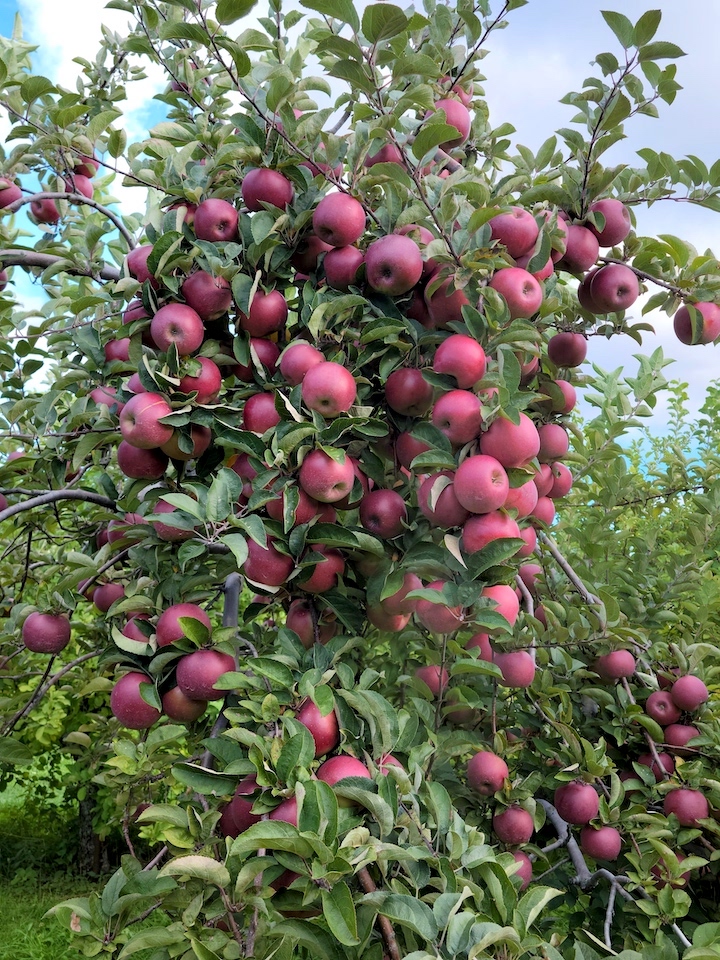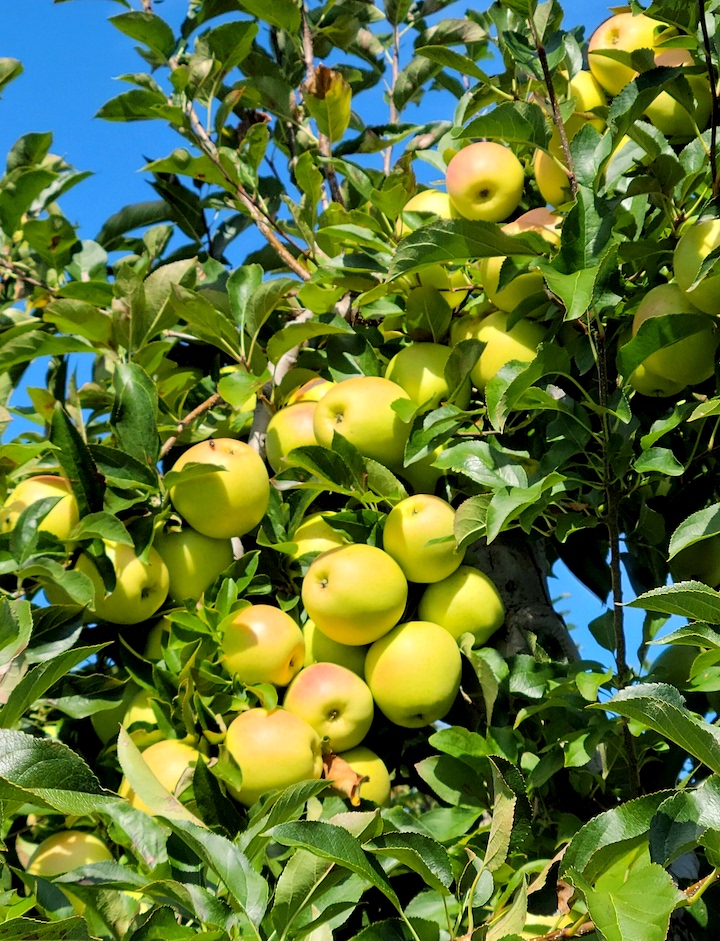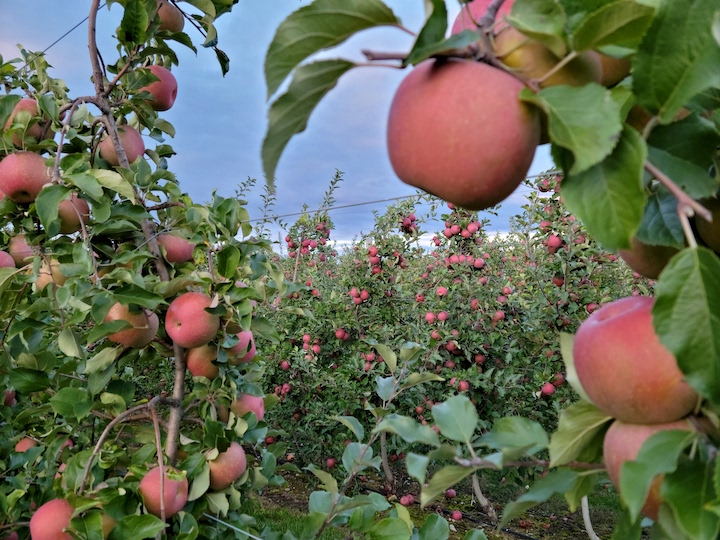
Like many New England Orchards, these Hampshire apple trees at Applecrest Farm Orchards, Hampton Falls, New Hampshire, were loaded last fall. (Russell Steven Powell)

FEBRUARY IS AN IDEAL TIME to seek out New England-grown apples and ciders at farm stands, farmers markets, and grocery stores.
There are many great choices right now due to a larger-than-average 2021 crop at many orchards — some growers reported record or near-record harvests — and the quality has been as exceptional as the volume.
Just beware the trademarked apples! New apples appearing in grocery stores with names like Lady Alice or Cosmic Crisp cannot be grown locally. Only growers authorized by the trademark holder, often a single large orchard or conglomerate, can legally grow these varieties, shutting New Englanders out.
But it’s not just out of loyalty to New England’s growers that consumers should buy locally grown fruit. New England’s leading varieties are superior in flavor, and far more diverse, than most trademarked apples from beyond the region.
In their ongoing quest to produce the next Honeycrisp — their Holy Grail — apple breeders have produced a string of apples in recent years that are perfectly fine but indistinguishable. They arrive with big marketing budgets but forgettable flavors and names, many of them having nothing to do with apples (WildTwist, Kiku, Snapdragon).
Of course, the same could be said of nondescript apple names like Cortland (a county in New York state, 1898), Macoun (a prominent horticulturalist, 1909), and McIntosh (the family name of the Canadian farmer who discovered it, 1801). But after more than a century of popularity, the names of these varieties or “brands” have eclipsed their origins and simply come to mean “apple.”
It’s highly doubtful that most of the new, obscurely named trademarked apples will ever get that far. Once the novelty fades and the marketing dollars trail off, they may soon disappear, while the rich flavors and textures of New England-grown apples live on.

The best of the new varieties, with names like Ambrosia and EverCrisp (which actually reference a feature of the apple!), eventually find their way into New England orchards, bringing something new to the palate.
Many outstanding varieties developed elsewhere, notably Honeycrisp and Fuji, flourish in New England’s distinctive climate and soils.
There are many more to choose from. A recent walk down a supermarket aisle found locally grown Empire, Golden Delicious, and Jonagold, in addition to Cortlands, Macouns, and Macs. Most orchard stores feature even more varieties.
So bite into a crisp, juicy New England-grown apple or serve it warm in a crisp or pie, a delicious reminder of a bountiful harvest, and a taste of what’s to come.
Visit our Orchard Finder to find out who is open, and who grows what.
* * *
THE CIDER IS FLOWING! The strong apple crop has produced equally good ciders, fresh and hard, available at orchards, stores, and New England’s more than 85 cideries.
Here’s a short video showing how cider is pressed and bottled at Red Apple Farm in Phillipston (the orchard makes both fresh and hard cider), and New England Apple Products, in Leominster, Massachusetts:
* * *
IT’S PRUNING SEASON in New England orchards. In preparation for spring, growers are busy removing dead or damaged limbs, clearing away debris, and artfully shaping trees to ensure that a maximum amount of sunlight gets in during the growing season.
For home orchardists hoping to prune their own trees, here is an excellent, two-part video program on pruning methods, featuring Mo and Andre Tougas of Tougas Family Farm, Northborough, Massachusetts:
2 Comments
Spencer Morris
Nice pruning video. 10 farmers 10 different hair cuts!
Russell Powell
Ha! I like it. Are you, too, trimming?